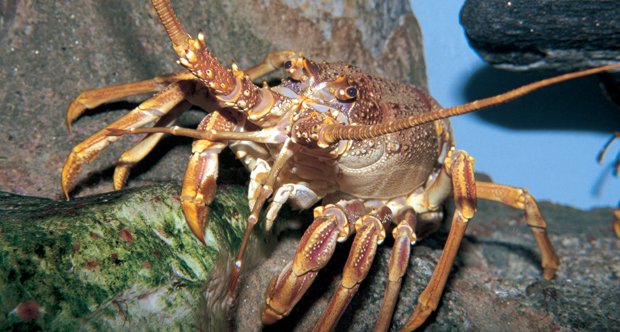Supermum lobster first to breed in captivity

GIVING BIRTH TO 50,000 offspring and then leaving them to fend for themselves might not sound like ‘supermum’ behaviour.
But that’s the term scientists at the Australian Institute of Marine Science (AIMS) in Townsville are using to describe the first captive-raised lobster to successfully produce larvae.
They have good reason to be happy with the achievement – it marks a major step forward in efforts to establish a lobster aquaculture industry.
AIMS principal researcher Dr Mike Hall says successfully breeding with captive-raised lobsters had proved impossible in the past and the institute had achieved a world first.
“This is going to grab considerable interest around the world” he says.
Selective breeding could lead to better tasting lobsters
The development could lead to not only large-scale captive breeding, but also better looking and tasting lobster, he adds.
“They are a truly domesticated species now and once they have been domesticated you can start selecting characteristics to breed for such as better taste and better colour,” Mike says.
The growing prosperity of countries like India and China was leading to a massive increase in middle and upper class comsumers who wanted luxury food such as lobster, he says.
“The demand is massive, no wile fishery can supply that,” he says. “We already have to import into our country far more than we are able to produce domestically which is a terrible position to be in.”
The development of aquaculture was vital if future generations wanted to be able to eat seafood.
“We can’t really expect to feed the world’s population on (wild fisheries) just as you wouldn’t expect to feed the world on bush tucker.”
Mike says only a small pecentage of larvae born in the institute’s tanks at Townsville would survive to adulthood and further avances were needed to make lobster aquaculture a viable industry.
However, knowledge in the area was increasing fast and it was “technically possible” for up to 90 per cent of larvae to reach maturity in the future, he says.
Given that each female can spawn up to one million eggs, lobster farms may eventually be able to produce thousands of animals for consumption using only a handful of breeders.
RELATED STORIES

